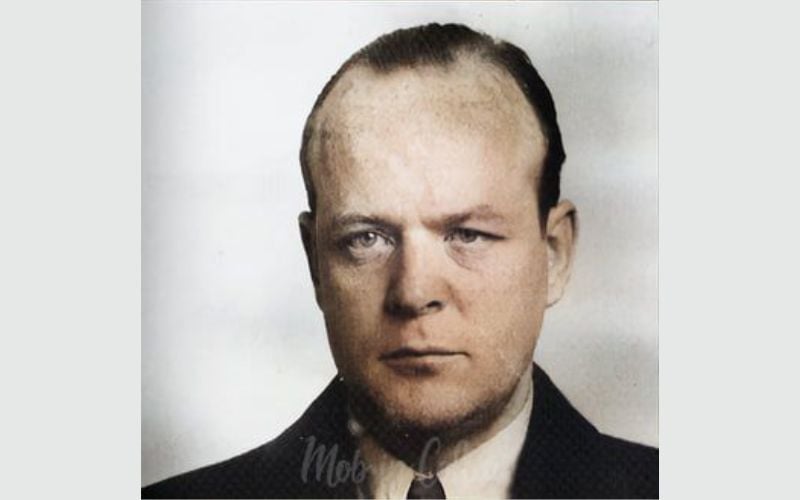Published Friday, October 23, 2009, 8:51 AM
Cape Breton, Nova Scotia – The Big Fiddle stands guard over Sydney Harbor at the entrance to the Joan Harriss Cruise Pavilion signaling the importance of the violin to Cape Breton culture.
Inside the pavilion are the premier concerts bookending the Celtic Colours International Festival (www.celtic-colours.com) on the opening and closing weekend of the nine-day affair held each autumn for the past 13 years.
Last Saturday evening this year’s fest appropriately closed with a very special show, “Master Cape Breton Fiddler: A Tribute to Jerry Holland,” who lost his valiant battle with cancer last July at the age of 54 but not before firmly establishing himself as one very big fiddle player in the realm of Celtic music.
Originally this tribute and the festival were hopeful that Jerry would be participating in it himself. Alas that wasn’t possible, so it was left to his many musical friends whom he shared so much with since moving to Cape Breton in 1975 from his Massachusetts home to proclaim his extraordinary contributions to putting Cape Breton on the well-deserved map of Celtic music.
An empty chair with Holland’s fiddle graced the stage symbolically inspiring all the musicians to continue to keep his memory alive through the music.
And that they did in an exceptional night featuring a multi-media mix of old photos, video and film, plus live camera shots of the musicians performing on stage to provide a more intimate connection with the 1300 people gathered in the huge exhibition hall.
Tinged with sadness and heartfelt remarks throughout the evening as pictures were displayed, it was more celebratory in the Irish wake mode because the music couldn’t do anything else but capture the spirit of the man and the others who performed on the night.
The show was ably conducted by joint emcees, Paul Cranford (Cape Breton) and Maire O’Keefe (Tralee, Co. Kerry) as not only long-time friends with Jerry Holland but this year’s artists in residence at the festival which featured Irish artists in particular (more on that in a future column).
Also playing an important role was festival artistic director Joella Foulds behind the scenes who guided the production weaving musical performances between an informal question and answer role carried out on stage by O’Keeffe. This ensured that the much-anticipated show would flow along and provide an insight into the man and his character as well as the obvious entertainment value.
In varying combinations all night were some of the Cape Breton legendary luminaries who where associated with Holland over the years. It would include fiddlers Howie and Dougie MacDonald, David MacIssac, Brenda Stubbert, P.J. Cormier, Doug Lamey (from Boston and grandson of Bill Lamey who inspired the young Jerry Holland in Boston), Cranford and O’Keeffe.
Paul MacDonald did much of the guitar accompanying, though Dave MacIssac and P. J. Cormier took turns as well. The all-important piano in Cape Breton music was handled by three of the finest keyboard players around in Marion and Allan Dewar and Hilda-Chiasson-Cormier.
Cranford collaborated with Holland on two important tune books as well on other musical projects. O’Keeffe was “shanghai-ed,” or was it more like “Cape Breton-ed” into a greater appreciation of Cape Breton music when Holland and the two Pauls (MacDonald and Cranford) along with two other musicians arrived at her Dublin apartment in need of a shower.
Soon she and five of the lads were off on a spraoi down to Slieve Luachra and Cape Breton-Ireland seeds were being further sown. These and other tales were told about the life and times of Jerry Holland mostly in the comic vein that also is a hallmark of Cape Breton, where homespun music, dance and laughter are as omnipresent as the gorgeous scenery surrounding the island.
In an evening filled with many dramatic and tender moments, the most moving for me involved Halifax native Allan Dewar, known primarily as a piano backer for many of the hot young Cape Breton fiddlers on tour like Natalie McMaster and Ashley MacIssac.
When a musician passes on, especially a respected one like Holland, the decision about whom to leave his or her instrument to can be a very meaningful one for both the giver and the receiver. So when the lights came up at one point with Dewar holding Holland’s fiddle in his hands, he told the crowd in quiet and emotional tone, “He expects me to play this” so the time-worn and played fiddle would continue to play an inspired role.
Since Dewar is the music director of Celtic Music Interpretive Center in Judique on the well-traveled Ceilidh Trail on Cape Breton’s west coast and well-immersed in its tradition-bearing reputation, it will be put to good use as Holland wished.
As the splendid production drew to a close, the festival’s co-founder Max MacDonald announced that a major truck accident on the TCH 105 over Kelly’s Mountain had closed the critical passageway for many who came from near and away, and especially those wanting to make their way back to the late night festival club in St. Anne’s. People were taken aback and plotting more tedious and time-consuming detours.
But quickly an announcement followed that the road was cleared and now people could be on their way. I thought it was one more benevolent act that Holland performed from his new home above to make sure that we still had time to have a bit of fun in his memory.
Holland was a brilliant talent and person and he won’t be forgotten wherever people gather to listen to and play Celtic music as this night attested to, and kudos to Celtic Colours International Festival. It was the ultimate tribute to the “Master Cape Breton Fiddler” who we were told cried tears of modesty rather than joy when an album with that title first appeared.
No one more than he realized he was born into a great tradition which others freely shared with him as he grew older and he in turn made his own contributions that influenced countless others including all the performers who gathered to honor his legacy on an October night in Sydney in the shadow of the Big Fiddle.




Comments